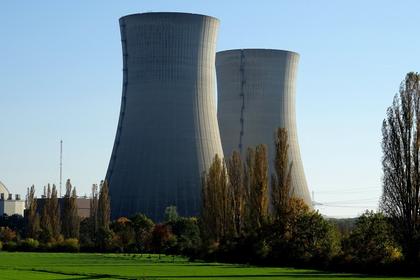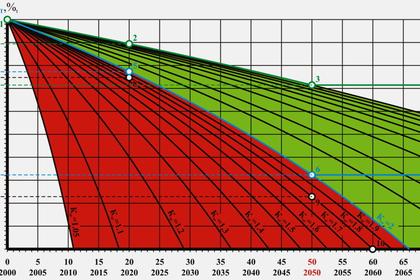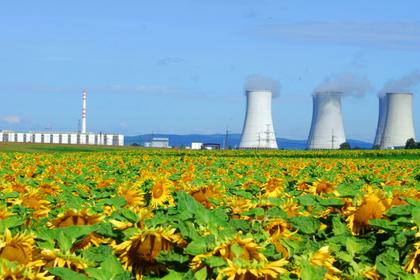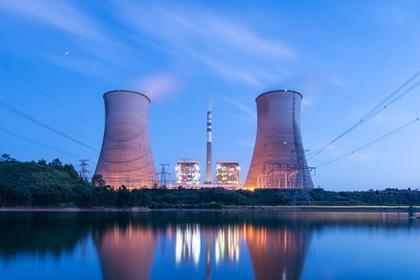
NUCLEAR FOR CLIMATE ADAPTATION
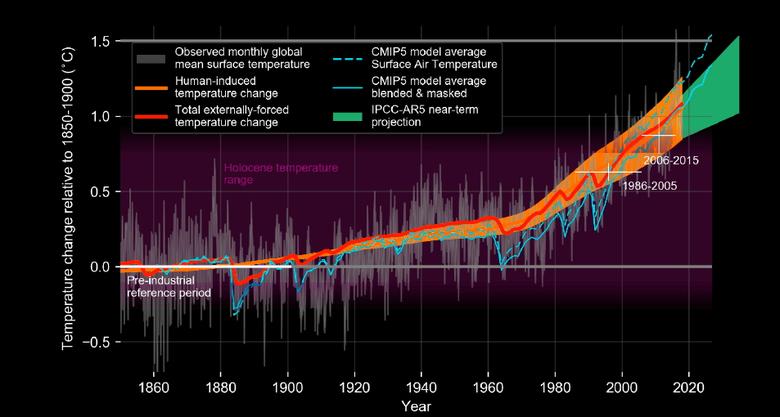
IAEA - OCT 14 2021 - Nuclear Science and Technology for Climate Adaptation and Resilience
A Reference Document
Executive Summary
Climate action has become a matter of highest priority and urgency, as its effects are already severely impacting many regions of the world. The adoption of the Paris Agreement in 2015 with the specific goal of “holding the increase in the global average temperature to well below 2°C above pre-industrial levels and pursuing efforts to limit the temperature increase to 1.5°C above pre-industrial levels” was a landmark achievement. The upcoming climate conference, COP26, in Glasgow in late 2021 will review previous commitments and the status of implementation with the expectation to enhance and upgrade the measures.
For achieving the 1.5°C/2°C goal, countries have committed themselves to mitigate climate change by reducing anthropogenic greenhouse gas (GHG) emissions and to take measures to adapt to climate change. Projections show that temperatures will increase to 1.5°C above pre-industrial levels between 2030 and 2052 if emissions keep increasing at the current rate.
Climate change is expected to lead to an average global temperature increase, more frequent heat waves, and a geographical shift of climatic zones. Droughts will become more frequent, longer and more severe. A hotter climate will also influence the availability and quality of fresh water. Taken together, the consequences of climate change are bringing about broad and deep social and economic consequences, impacting the lives and livelihoods of billions of people.
While the main goal of the international community is to reduce GHG emissions, a suitable adaptation response is also needed. It requires commitments across a broad range of sectors spanning agriculture, energy, industry, health and the environment. Science plays a key role in adaptation planning. Decision-making on adaptation, including the various options considered, needs to be based on sound scientific, technical and socioeconomic data. Technologies, including nuclear technologies and techniques, can support the climate adaptation process. However, their successful transfer goes beyond the exchange of technological solutions. It requires enabling policy and regulatory environments, and, moreover, human and institutional capacities to deploy these specific technologies and techniques.
Climate adaptation covers a wide range of structural, social and institutional options intended to build resilience and reduce vulnerabilities in multiple areas. The IAEA expertise and experience is relevant for many of these areas: including land use and management, climate smart agriculture, food production systems, analysis of GHG emissions, management of water resources, coastal protection and ocean change. Nuclear techniques in these areas complement conventional climate adaptation and climate science technologies and approaches. The IAEA provides an integrated approach to the causes and effects of climate change and contributes to climate adaptation and climate science in six thematic areas:
Within each of these areas, nuclear technologies are deployed to advance climate science and/or to support Member States in adapting to climate change. For example, sustainable land management practices are being supported through the use of fallout radionuclides, which provide reliable information on soil erosion rates to assess climate change impacts on soil health and land degradation; or the application of isotopic techniques, which help to improve livestock feeding practices.
In the area of climate smart agriculture, isotopic signatures, biomonitoring and bioassays are used to monitor agrochemical inputs, as well as for the assessment of the transfer of chemicals to the environment and, ultimately, the food supply chain. Nuclear and stable isotope techniques are applied to unambiguously quantify processes associated to land-water management, including carbon sequestration and nitrous oxide emissions1. Isotopic techniques are also being used for agricultural water management, such as developing water-saving technological packages, determining sources of pollution, and tracking water movement and pathways in agricultural landscapes with different cropping systems and farming practices.
Food production systems benefit from nuclear techniques such as mutation breeding, which uses irradiation to speed up the natural process of mutation to produce new varieties of crop species that are adapted to abiotic stresses, rendering them able to thrive under changed environmental conditions. This technology has helped improve many crops so that they can perform better in harsh environments or be resistant to new pathogens.
Nuclear techniques offer substantial advantages over conventional techniques for the precise analysis and measurement of GHG emissions, for example, in the agricultural sector. Using stable isotopic techniques, the processes of release of greenhouse gases into the atmosphere can be identified. This enables the development of climate-smart technology packages to sustainably reduce emissions, improve resource use efficiency, and increase crop and animal productivity.
Another specific example where nuclear techniques are deployed is in the reconstruction of paleo-climates. Information on past climatic conditions derives mainly from stable isotope ratios, reflecting the prevailing climatic conditions during the formation of the paleoclimatic archive. This allows reconstructing past climates and validating models reproducing atmospheric processes.
To support sustainable water management, isotopic hydrology tools are used to assess local and regional water cycles by recognizing the unique isotopic fingerprint of water drops that can be tracked through the hydrological cycle. A better understanding of the sources of groundwater, its underground flows and its replenishment helps to determine how resilient groundwater is to climate change, as well as its vulnerability to pollution.
In the area of ocean change and coastal protection nuclear techniques are used to identify, source, and track the spatial and temporal drivers of ocean health and topics such as atmosphere/ocean exchange, marine radioactivity, coastal and marine carbon sequestration, sea-level rise and ocean acidification.
The IAEA, in accordance with its Statute, seeks to accelerate and enlarge the contribution of atomic energy to peace, health and prosperity throughout the world. Nuclear technologies, including those described above, undergo rigorous validation through IAEA’s research activities. Once relevant nuclear techniques are vetted, they can then be transferred to all countries, especially developing Member States, through the IAEA technical cooperation programme.
The IAEA has a long history of supporting the research, development and uptake of specific nuclear techniques in the context of thematic areas relevant for climate adaptation. The IAEA applies nuclear science and technology as an alternative for, or to complement, existing conventional techniques and bring new solutions to support its Member States. The IAEA undertakes research activities in its own laboratories and also through its extended research networks, composed of research institutions, academia and reference laboratories.
The IAEA is engaged with its Member States on numerous technical cooperation projects relevant for climate adaptation and resilience in the six thematic areas described above. Many Member States have included climate adaptation actions in their nationally determined contributions (NDCs) and have started implementing these activities, often with support from international partners. The IAEA is complementing the support offered by other organizations through the transfer of validated technology and techniques for climate change adaptation and resilience building. From 2012 until 2020, the IAEA has supported 102 countries and territories in their efforts to adapt to climate change through 481 technical cooperation projects, with total disbursements of approximately €112 million. From the total number of projects, 89 are Regional and Interregional projects that contribute to climate adaptation efforts, with total disbursements of €51.7 million. Most projects are located in Africa, followed by Asia and the Pacific, Latin America and the Caribbean, and Europe and Central Asia. Over 70% of the IAEA’s climate adaptation related projects focus on climate-smart agricultural practices and optimizing livestock and crop production.
Following the principles of results-based management, a results framework has been developed for the IAEA’s work on climate adaptation. The overall objective of the IAEA’s work on climate adaptation is to contribute to climate change adaptation efforts through research and technical cooperation in nuclear science and technology.
Key global challenges such as climate change need to be addressed in an integrated, systemic and inclusive manner, and partnerships facilitate comprehensive and sustainable solutions bridging the gap between research and policy impact. Scaling up IAEA support includes identifying and establishing meaningful partnerships to support countries towards the achievement of the UN Sustainable Development Goals (SDGs) and the implementation of the Paris Agreement.
-----
Earlier:

